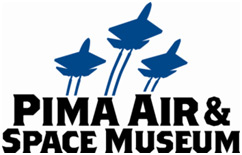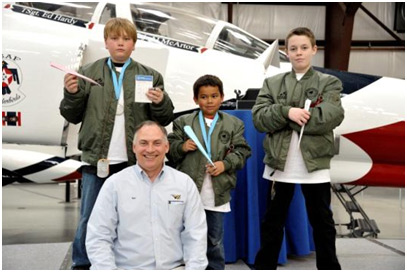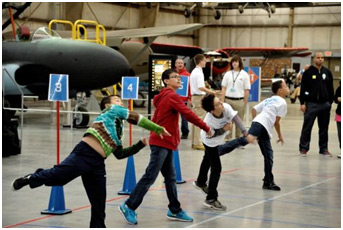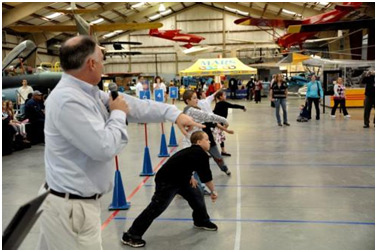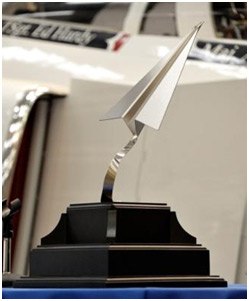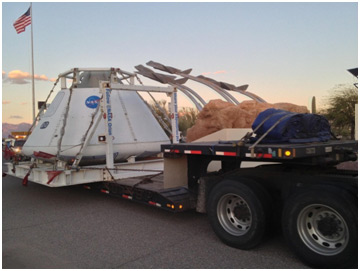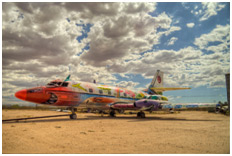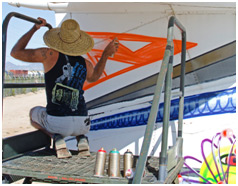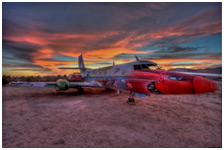
FOR IMMEDIATE RELEASE
Media Contact:
Meghan Marum
6000 East Valencia Rd
Tucson, AZ 85756
This email address is being protected from spambots. You need JavaScript enabled to view it.
520.574.0462
Download PDF
MILITARY VEHICLE PRESERVATION ASSOCIATION CONVOY TO HAVE STOPOVER AT THE PIMA AIR & SPACE MUSEUM THIS AFTERNOON
Tucson, October 13, 2015 –The Military Vehicle Preservation Association (MVPA) 2015 Bankhead Highway Convoy is expected to arrive at the Pima Air & Space Museum at 3:30pm this afternoon.
In 1920, to further their understanding of the practicality of motorized transport and its place in the US ARMY, Col. John F. Franklin lead a motor convoy of various military vehicles across the country on the newly-formed Bankhead Highway. The 1920 route began at the White House, in Washington, DC and ended at Balboa Park, in San Diego, CA. They traveled some 3,300 miles over 116 days.
To mark the 95th Anniversary of the Convoy the MVPA’s begun retracing the original 1920 Transcontinental Motor Convoy route on September, 19 with a departure from Washington, DC. With as many as 65 Historic Military Vehicles (HMVs) in the convoy, ranging from WWI-era to those just released from the US Armed Forces inventories. The privately owned HMVs include motorcycles, jeeps and large cargo trucks. The convoy is expected to arrive in San Diego, CA on October 17, 2015.
“We are very excited to be a stopover place for the MVPA’s 2015 Bankhead Highway Convoy” said Scott Marchand, Executive Director of the Pima Air & Space Museum. “This is a great opportunity for the community to come out and see some very fascinating military vehicles from the past and the present.” The MVPA’s 2015 will be parked on the museum grounds near the C-141 Starlifter. The Pima Air & Space Museum is open until 5:00pm with last admission at 4:00pm. The convoy is expected to depart from the museum early tomorrow morning as they continue on their route towards San Diego, CA.
The Pima Air & Space Museum
The Pima Air & Space Museum is one of the largest aviation museums in the world, and the largest non- government funded aviation museum in the United States. The museum maintains a collection of more than 300 aircraft and spacecraft from around the globe—including many rare and one-of-a-kind—and more than 125,000 artifacts. Exhibits at the museum include some of the world’s greatest aviation heritage, including military, commercial and civil aviation. Among them are the SR-71 Blackbird—the world’s fastest plane, a B-29 Superfortress—the highest flying and fastest WWII bomber, and a rare World War II German V-1 "buzz bomb." The museum has five large hangars totaling more than 177,000 square feet of indoor exhibit space. Pima Air & Space maintains its own aircraft restoration center, and also offers exclusive tours of the Aerospace Maintenance and Regeneration Group (AMARG), also known as the "Bone Yard" (across from the museum at Davis-Monthan Air Force Base).
The Pima Air & Space Museum is located at 6000 E. Valencia Road, Tucson, Exit 267 off Interstate 10. The museum is open daily except Thanksgiving and Christmas, from 9 a.m. to 5 p.m. with last admission at 4 p.m. Admission is $15.50 ($12.25 for Pima County Residents) for adults, $12.75 for seniors 62 and older and active military, $9.00 for youth 7-12, and free for children under 6. For general museum information, please call 520- 574-0462 or visit www.pimaair.org.
